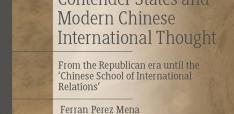Belt and Road’s Democratic Dilemma: Unraveling China’s Infrastructure Influence in East Asia

Bridges or Barriers? Unpacking China's Infrastructure Invesments on Southeast Asian Democracy.
China’s Belt and Road Initiative (BRI) has been a subject of intense scrutiny since its inception in 2013, with debates and controversies over its economic benefits and geopolitical implications. However, a critical yet overlooked aspect of this ambitious infrastructure program is its potential impact on ‘democratic governance’ in recipient countries, particularly in South East Asia. As China extends its economic reach, questions arise about the long-term consequences for political systems, poverty, environment impacts and regional power dynamics among other issues.
Arguing that the BRI inherently undermines democracy as China does not consider the political regime it lends to is inaccurate, as the BRI could present both opportunities and risks to democratic governance. Contrary to widespread concerns that China deliberately undermines democracy through economic coercion, it is crucial to take a more nuanced approach grounded in empirical evidence and contextual understandingofthe effect of the lending on the recipient’s political system.
Positive and Negative Correlations
Analyzing correlations between democracy scores in the Southeast Asian region from the Economists Intelligence Unit and investment data from the BRI Investment Tracker by the American Enterprise Institute yields intriguing results. Some Southeast Asian countries, such as Indonesia, Myanmar and the Philippines, exhibit a positive correlation between increased BRI investments and improved democracy scores. Myanmar was an interesting case that the data doesn't reflect the nuance as Chinese BRI investment increased till 2018 and 2019 as its democracy scores increased too, but after that both indicators declined, considering the junta taking back power early in 2021 so the correlation still remains high.It challenges the notion that Chinese economic engagement inherently erodes democratic institutions.
Conversely, the democracy score improved as BRI investments increased. Conversely, Thailand and Vietnam negatively correlate, aligning more closely with the often-cited ‘debt trap diplomacy’narrative. Remaining countries with data available, Singapore has a weak positive correlation, while Malaysia while tending negative, does not show much correlation. The divergent trends underscore the importance of considering factors beyond regime type when evaluating BRI’s impact, such as geostrategic interests, economic priorities, and debt sustainability assessments, which all play crucial roles in shaping the consequences of Chinese investments.
Moreover, the appeal of China’s state-driven development model presents an ideological challenge to Western-style liberal democracy. Some autocratic or hybrid regimes may find the ‘no-strings-attached’ approach of Chinese investment more attractive than conditional support from Western donors. This soft power dimension of BRI warrants careful consideration, as it could shape governance norms and development paradigms across the region, though no immediate risk of democracy declining in the region is yet evident.
Sri Lanka: A Cautionary Tale
The Sri Lankan experience is a cautionary tale highlighting the potential risks of over-reliance on Chinese financing. The country’s struggle in 2019 with debt repayment, culminating in the controversial lease of Hambantota Port to a Chinese state-owned company, has become emblematic of concerns surrounding BRI investments. However, it’s crucial to recognize that Sri Lanka’s predicament resulted from a complex interplay of factors, including internal political strife and economic indebtedness due to war, domestic policy decisions and broader economic challenges, rather than a deliberate strategy of entrapment by China.
Malaysia’s Shifting Engagement
The Malaysian experience with the BRI further illustrates the interplay between domestic politics and international investment. The initial enthusiasm for Chinese-backed projects under former Prime Minister Najib Razak from 2014-2018 later either canceled or stood stillforreassessment and renegotiation under subsequent administrations. The influx of Chinese investment contributed to Malaysia’s democracy score dropping to 7.29 out of 10, a slight decline from 7.30 in 2022. The country remains categorized as a ‘flawed democracy’, with and EIU Democracy Index score of 5.88. The decline occurred despite Malaysia positioning itself as a leader in Southeast Asia for infrastructure partnerships. The situation illustrates the agency of recipient countries in shaping their involvement with BRI is potential for democratic processes to influence the trajectory of such partnerships.
While the data does not support claims of a systemic erosion of democracy through BRI, it raises important questions about the long-term implications of increased economic dependence on China. Countries heavily reliant on Chinese financing may face heightened risks of democratic backsliding, particularly if they lack robust institutional safeguards or are already grappling with political instability. An example is Pakistan, where projects associated with the China-Pakistan Economic Corridor (CPEC), initiated in 2015, have contributed to increased risks of indebtedness and political instability, especially since 2018.
The Need for Nuanced Analysis
It is important to note that correlation does not imply causation, and the relationship between BRI investments and democratic performance,in our yet to be published paper on the topic,we observe that it is currently ‘bidirectional’. China’s strategic approach to investing in relatively stable countries, regardless of their democratic credentials, may reflect a pragmatic focus on protecting investments rather than an explicit agenda to undermine political systems. Concerns about debt traps and loss of sovereignty are valid, but the reality is more complex. BRI projects can potentially shape domestic politics within host nations, especially when they might become indebted,but the mechanisms through which this occurs, such as ‘elite cooptation’ or increased ‘government repression’, require further inquiry.
As the BRI enters its second decade in 2023, policymakers and scholars must move beyond simplistic narratives and engage with the initiative’s multifaceted consequences. It requires rigorous data-driven analysis of BRI investments and their impacts across various sectors and governance indicators, as well as in-depth case studies examining the long-term effects of Chinese infrastructure projects on local political dynamics and institutions, and accounts for geographical and regime-type variations. Comparative research exploring how BRI engagement differs from other models of international development assistance and greater attention to recipient country’s agencies and decision-making processes in shaping their participation in BRI is also crucial.
Balancing BRI Invesments with Democratic Institutional Safeguards
The correlation between BRI and democracy in East Asia remains an evolving story. While the data does not support alarmist claims of widespread democratic erosion, it does highlight the need for vigilance and strategic foresight. As China’s economic influence grows, countries in the region must balance the potential benefits of infrastructure development with the imperative of safeguarding democratic institutions and national sovereignty. The full implications of BRI for East Asia’s political landscape will only become apparent in the coming decades. In the meantime, nuanced analysis and robust public debate are essential to ensure that infrastructure investments contribute to sustainable development, further political stability and inclusive governance rather than exacerbating existing vulnerabilities or creating new dependencies internally with local elites or international aid dependency and the public indebtedness or recipient countries.
Dharish David (PhD) is an associate faculty for the University of London at the Singapore Institute of Management – Global Education (SIM-GE), teaching courses relating to political economy. He has written widely on infrastructure development, Asian political economy, economic development, and international relations. He can be reached at david014@mymail.sim.edu.sg and twitter handle: @dharishd.
Timhna S is a Doctoral Scholar and Senior Research Affliate at Centre for East Asian Studies, Christ University, Bangalore. She is also Teaching assistant for Korean Language at Seoul National University. She has previous worked as Project Assistant in projects funded by the U.S. State Department. She can be reached at timhna.s@res.christuinversity.in
Photo by funda izgi


